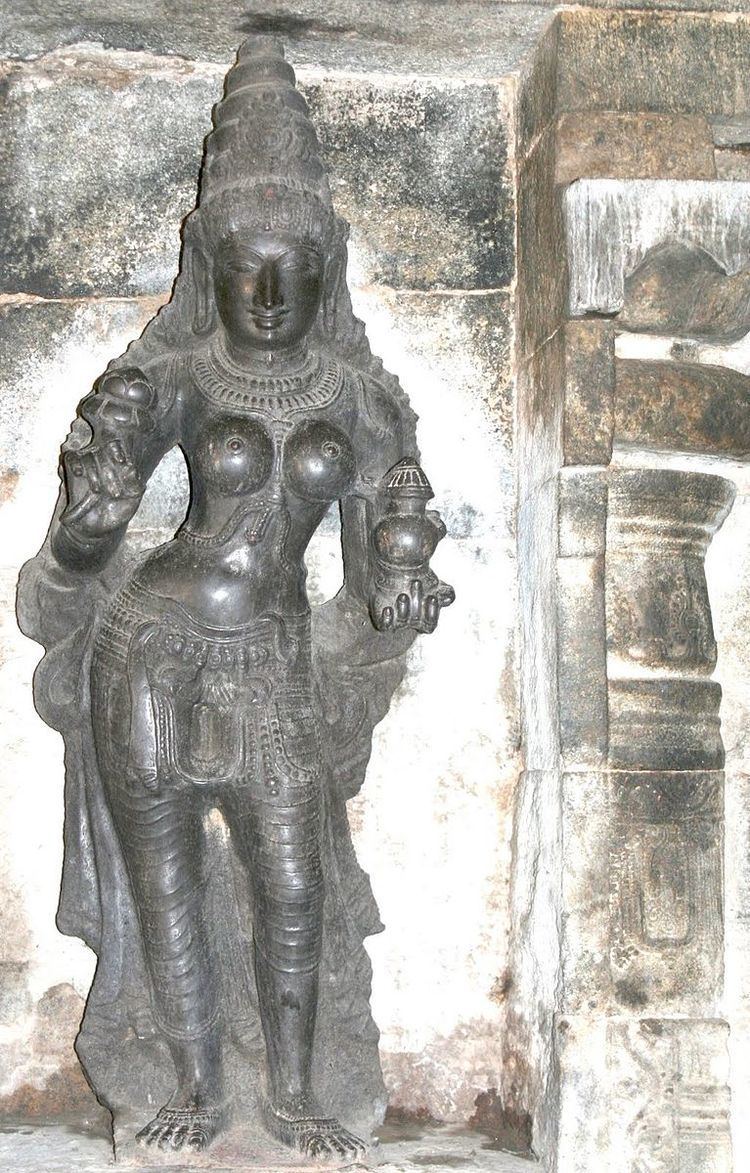 | ||
Similar Manna, Golden apple, Ambrosia | ||
Amrit (Sanskrit, IAST: amṛta) or Amata (Pali) is a word that literally means "immortality" and is often referred to in texts as nectar. Amṛta is etymologically related to the Greek ambrosia and carries the same meaning. The word's earliest occurrence is in the Rigveda, where it is one of several synonyms for soma, the drink which confers immortality upon the gods.
Contents
Amrit has varying significance in different Indian religions.
Amrit is also a common first name for Hindus; the feminine form is Amritā.
Hinduism
Amrit is repeatedly referred to as the drink of the devas which grants them immortality.
Amrit features in the samudra manthan legend, which describes how the devas, because of a curse from the sage Durvasa, begin to lose their immortality. Assisted by their mortal enemies, the asuras, they churn the ocean and release (among other auspicious object and beings) amrit, the nectar of immortality.
Amrit is sometimes said to miraculously form on, or flow from, statues of Hindu gods. The substance is consumed by worshippers and is alleged to be sweet-tasting and not at all similar to honey or sugar water.
Amrit was the last of the fourteen treasure jewels that emerged from the churning of the ocean and contained in a pot borne by Dhanvantari, the physician of the Gods.
Sikhism
Amrit (Punjabi: ਅੰਮ੍ਰਿਤ) is the name of the holy water used in the baptism ceremony or Amrit Sanchar in Sikhism. This ceremony is observed to initiate the Sikhs into the Khalsa and requires drinking amrit. This is created by mixing a number of soluble ingredients, including sugar, and is then rolled with a khanda with the accompaniment of scriptural recitation of five sacred verses.
Metaphorically, God's name is also referred to as a nectar:
Theravada Buddhism
According to Thanissaro Bhikkhu, "the deathless" refers to the deathless dimension of the mind which is dwelled in permanently after nibbana.
In the Amata Sutta, the Buddha advises monks to stay with the four Satipatthana: "Monks, remain with your minds well-established in these four establishings of mindfulness. Don't let the deathless be lost to you."
In the questions for Nagasena, King Milinda asks for evidence that the Buddha once lived, wherein Nagasena describes evidence of the Dhamma in a simile:
"Revered Nagasena, what is the nectar shop of the Buddha, the Blessed One?"
"Nectar, sire, has been pointed out by the Blessed One. With this nectar the Blessed One sprinkles the world with the devas; when the devas and the humans have been sprinkled with this nectar, they are set free from birth, aging, disease, death, sorrow, lamentation, pain, grief and despair. What is this nectar? It is mindfulness occupied with the body. And this too, sire, was said by the Blessed One: 'Monks, they partake of nectar (the deathless) who partake of mindfulness that is occupied with the body.' This, sire, is called the Blessed One's nectar shop."
— Miln 335
Mahayana Buddhism
Amrit (Wylie: bdud rtsi, THL: dütsi) also plays a significant role in Vajrayana Buddhism as a sacramental drink which is consumed at the beginning of all important rituals such as the abhisheka, ganachakra, and homa. In the Tibetan tradition, dütsi is made during drubchens - lengthy ceremonies involving many high lamas. It usually takes the form of small, dark-brown grains that are taken with water, or dissolved in very weak solutions of alcohol and is said to improve physical and spiritual well-being.
The foundational text of traditional Tibetan medicine, the Four Tantras, is also known by the name The Heart of Amrita (Wylie: snying po bsdus pa).
The Immaculate Crystal Garland (Wylie: dri med zhal phreng) describes the origin of amrita in a version of the samudra manthan legend retold in Buddhist terms. In this Vajrayana version, the monster Rahu steals the amrita and is blasted by Vajrapani's thunderbolt. As Rahu has already drunk the amrita he cannot die, but his blood, dripping onto the surface of this earth, causes all kinds of medicinal plants to grow. At the behest of all the Buddhas, Vajrapani reassembles Rahu who eventually becomes a protector of Buddhism according to the Nyingma school of Tibetan Buddhism.
Chinese Buddhism describes Amrita (Chinese: 甘露; pinyin: gānlù) as blessed water, food, or other consumable objects often produced through merits of chanting mantras.
